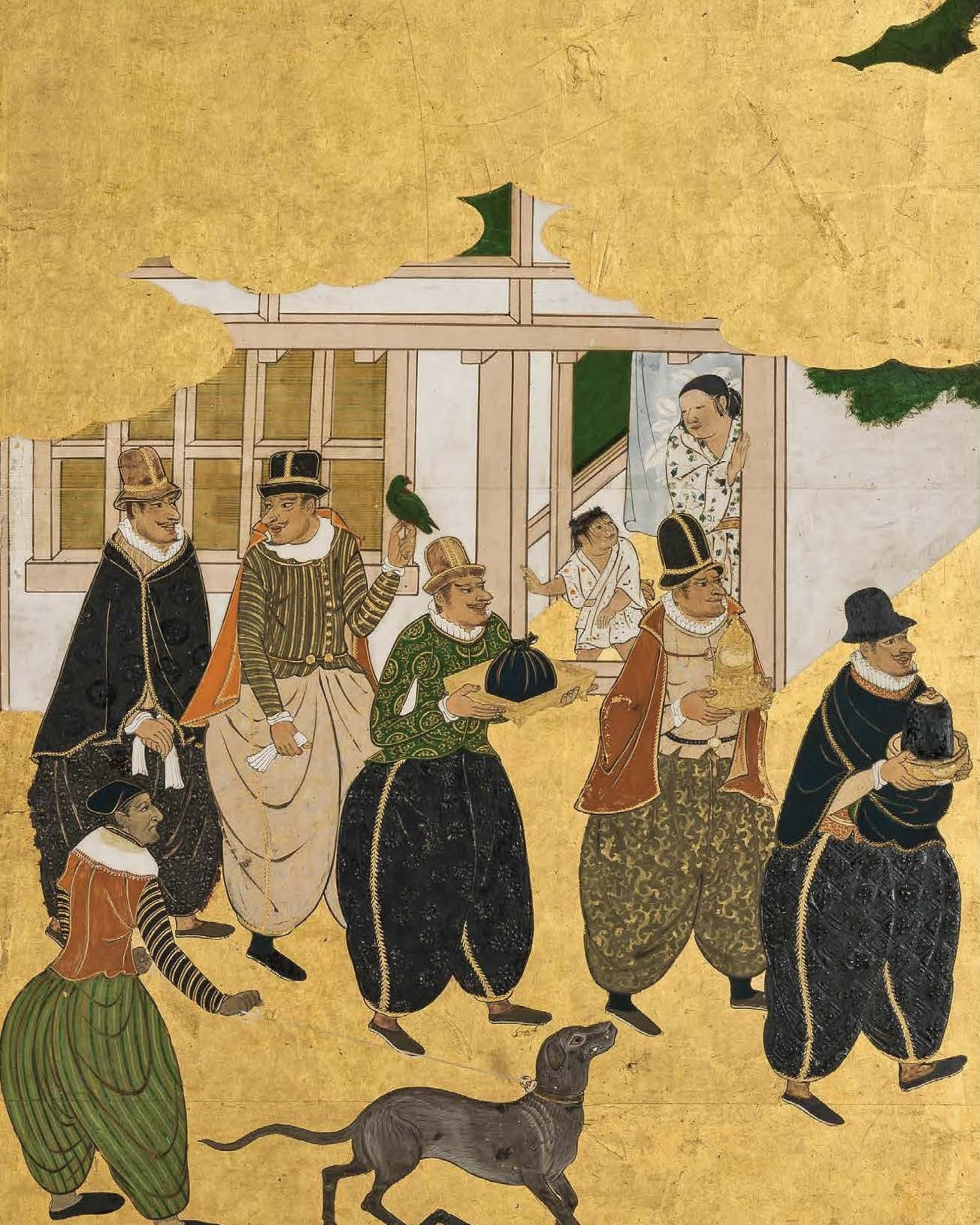
Transpacific Overture
THE RISING SUN AND THE SUNSET SEA
Hwee Lie BléhautIn the late sixteenth and early seventeenth centuries, while strolling through the streets of Japanese cities, you might have crossed paths with members of local high society dressed not in kimonos, but outfits of Portuguese style and cut, displaying ornamentation in the form of rosaries and crucifixes. They weren’t necessarily converts to Christianity, but may just have been fashion-forward individuals, adopting a new chic: the “Christian fad.” The Greeks referred to foreigners as “barbarians”; the word Nanban has much the same meaning, “Southern Barbarians.” The Japanese used the term for all the Europeans who disembarked in their ports from black ships laden with exotic goods starting in 1543. Two different worlds were suspiciously sizing each other up, chatting excitedly like new lovers, and experimenting with various hybrids: that is what we see depicted on the folding screens that, along with objects in lacquer, are some of the most memorable creations of Nanban art and the Nanban era, which lasted for almost a century.







